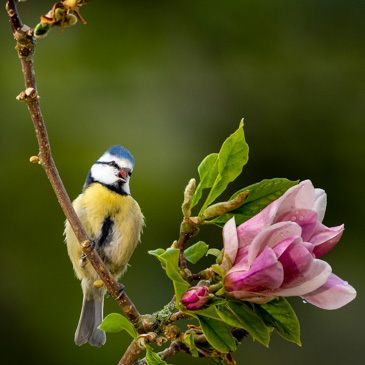The Prime Lens Project
When I first got into photography I was a bit of a lens snob. I dismissed zoom lenses and instead aimed to collect a range of prime lenses in the belief that the image quality would be better.
With experience, I discovered that the quality of a modern zoom lens is indistinguishable from most prime lenses. And as I get older, I prefer carrying a couple of zoom lenses to hauling around a backpack full of primes — especially since a zoom lens is more flexible.
But that flexibility comes at a cost. Sometimes it’s good to give yourself constraints — psychologists tell us that constraints actually enhance creativity. So in lockdown 3, during my permitted daily exercise, I decided to blow the dust off my prime lenses and mount a different one each day on my Olympus EM-1 Mk II. I wanted to examine how each lens made me see differently. I do the same dog walk in the morning, a circular route of a mile or so, and it takes in a canal, bridges, some woodland, and a fishing lake.
I took around 30-60 photos each day and then went through each collection to identify the two I liked the most. To make the comparison meaningful, I didn’t allow myself to do any significant post processing (like cropping the images or cloning out distractions). I just allowed myself basic exposure and contrast enhancements in Lightroom. Here are my thoughts on each focal length.
Day 1: Wide angle
On Day 1, I mounted my Olympus M.12mm f/2 (this is equivalent to 24mm on a full frame camera). Normally with a wide focal length like this I’m looking to find some foreground interest, but that was tricky on this walk.
On the plus side, the weather was misty and overcast, which meant I didn’t need to worry about having too much sky in my images.
This is a good example of what you see with this wide angle focal length. It was easy to get the entire canal boat in the frame and as a consequence it gives a real sense of impact. But the downside is that it’s so wide you get dead areas in the picture, like much of the canal foreground and the tops of the trees. It also allows pesky distractions into the frame (like in the bottom right corner). This image is much improved with a 16:9 crop.
1/25s, f/4, ISO 200.

This is another example of a wide angle landscape taken with the 12mm lens. I took the image from a bridge but in an ideal world I’d put some waders on, get in the stream, and get my camera closer to that clump of vegetation in the foreground. Note that tree disappearing into the mist: we’re coming back to that later.
1/80s, f/4, ISO 200.
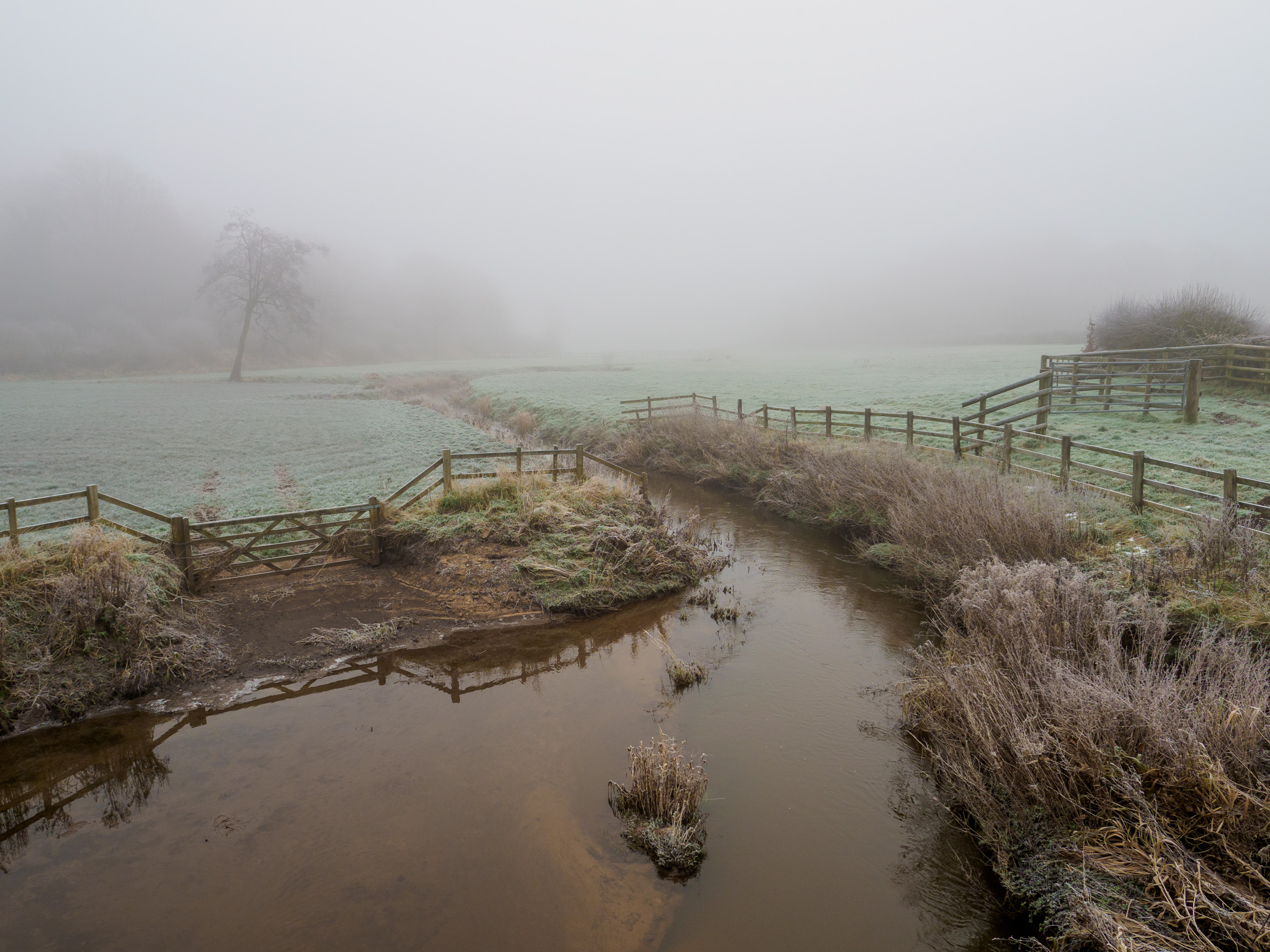
Conclusion: This tends to be my go to lens for landscapes but it’s a hard perspective to master. Unless you can get in really close to something interesting in the foreground, it’s likely you’ll get empty areas in the frame that need to be cropped out. But at its best you’ll get an image that looks heroic and epic.
Day 2: The street lens
On Day 2, I used the Olympus M.17mm f/1.8 lens (this is equivalent to 34mm on a full frame camera). This is a focal length loved by street photographers and photojournalists.
To help you orient yourself, the tree here is the same one that’s disappearing into the mist in the second image I took with the 12mm lens. This time, I decided to compose the view through a hole in a dry stone wall to act as a frame. With hindsight, I probably should have got in closer so the wall isn’t taking up so much of the picture.
1/40s, f/7.1, ISO 200.
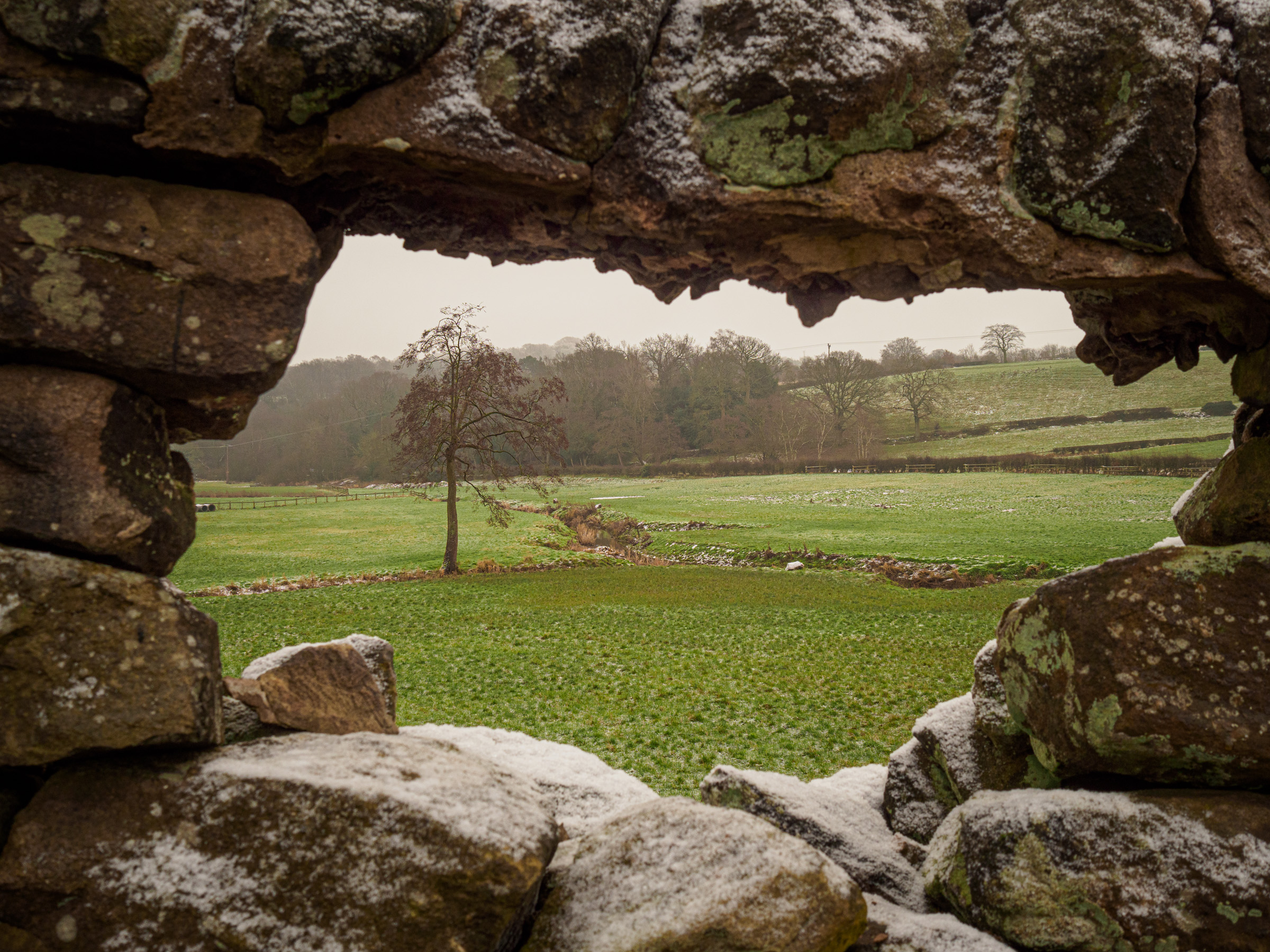
This is a fishing lake I go past at the end of my walk. I liked the shapes made by the snow on the lake. I also thought the reeds, even though they are well past their best, added some foreground interest. I didn’t try this view with the 12mm lens on Day 1, but I’m not sure it would have worked as it would push the reeds too far back in the frame. With hindsight, I should have shot this at f/8 (or shot two images and focus stacked them) as the background is soft.
1/80s, f/4, ISO 200.

Conclusion: I should shoot more landscapes at this focal length. It’s true that this lens doesn’t have the wow factor of a wider lens like the 12mm but it’s easier to compose with and it provides a more truthful, eyewitness view. It’s not as brash and in-your-face as the 12mm focal length but it can still bust a few moves when the music is right. I just need to watch my focus.
Day 3: The normal lens
On Day 3, I used the Olympus M.25mm f/1.8 lens (this is equivalent to 50mm on a full frame camera). I’ve heard people describe this focal length as a 'normal' lens because it matches the field of view of the human eye. I’m not sure I agree with this assertion. It’s true that this lens make objects seem in proportion, but to my eye the world feels a bit zoomed in.
And that’s a good summary of how I felt using this lens: a bit zoomed in. I found myself needing to take a step back on more than one occasion to capture what I was seeing. Ironically, it didn’t feel as “normal” a view as with the 17mm lens. And although I felt closer in, the lens wasn’t close enough to take meaningful detail shots.
Here’s a nice image of a canal boat in the mist. It’s the kind of composition that you might see on a postcard. It’s not the kind of image that will engender strong emotions, one way or the other. It’s the lens equivalent of chamber music: reserved, controlled and a bit detached.
1/160s, f/4, ISO 200.

Compare this with the second image I took with the 12mm lens and I think you’ll agree that this is the right focal length for this landscape view. The tree now looks more in proportion rather than being pushed to the back of the frame. And the stream doesn’t dominate the foreground. There’s a good sense of balance and I imagine it’s the kind of lens a scientist would like: good at capturing reality.
1/250s, f/4.5, ISO 200.
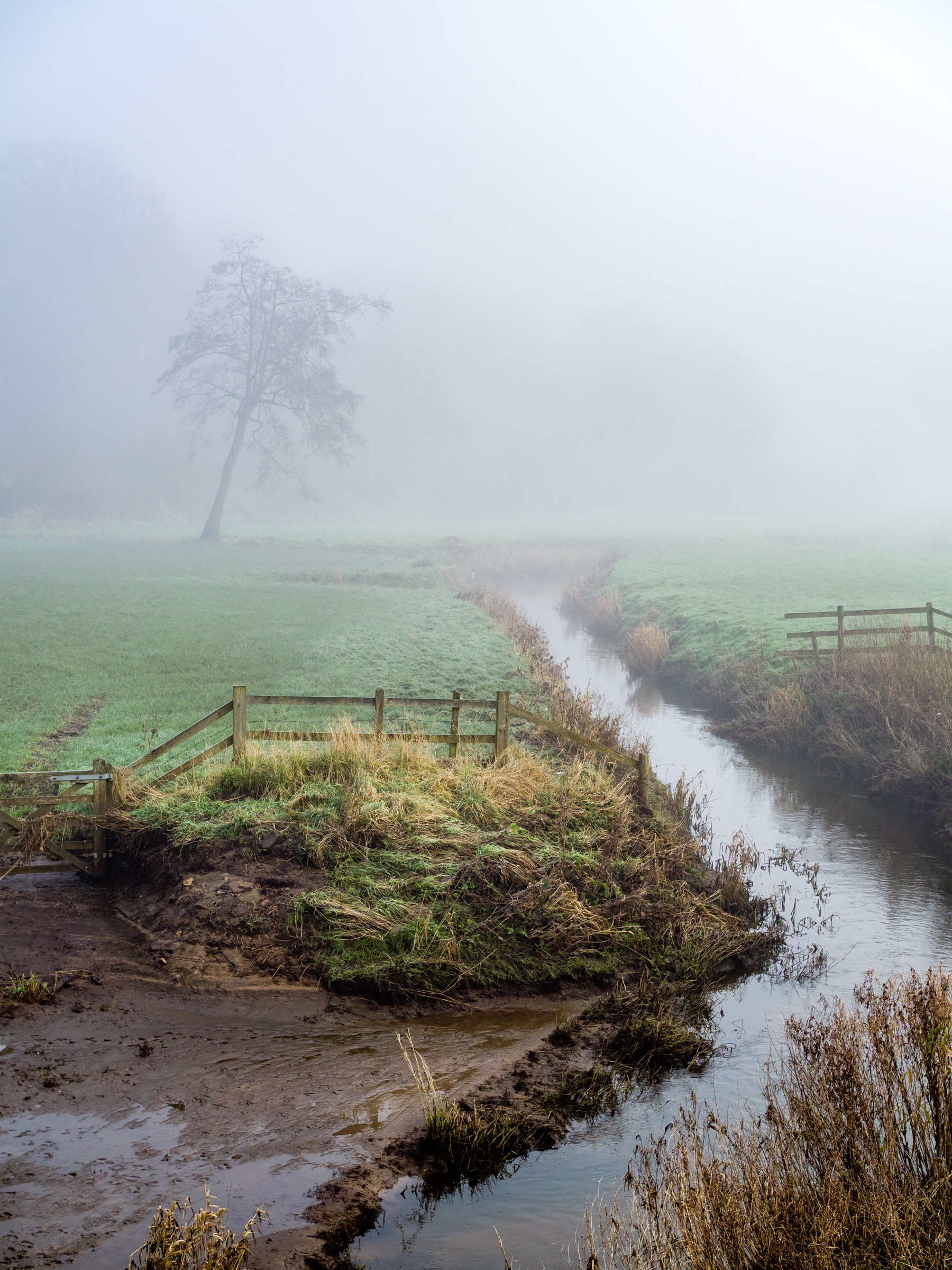
Conclusion: This lens feels like a good all rounder. If I’m heading out and I’m not sure what I’ll be shooting, this lens would probably be a good choice. It’s an easy lens to compose with as it makes everything in the scene feel in proportion. The downside is that it feels dispassionate and emotionless, especially with landscape views.
Day 4: The portrait lens
On Day 4, I used the Olympus M.45mm f/1.8 lens (this is equivalent to 90mm on a full frame camera). I didn’t have high expectations using this lens for landscape photography, and my expectations were pretty well met. It doesn’t have a short focusing distance, so it’s not very good for macro shots. At the same time, it pulls the scene in so close that it’s hard to create a vista (at least, that’s the case with the views on my dog walk). Perhaps it would fare better if there were semi-distant hills or mountains on my walk, although then I suspect I’d need an even longer lens like a 200mm equivalent.
I found it very difficult to see anything worth photographing with this lens. It wasn’t helped by the weather: it was grey and overcast with no interesting light. For some images, I found I needed to boost my ISO setting by a stop to ensure I avoided camera shake. I was taking shots pretty much for the sake of it — I knew that these pictures wouldn’t work, but I tried anyway. When I looked over the images later, it was hard to find even two worth showing.
This was taken by the fishing lake. Compare this with the second image I took with the 17mm lens and you’ll get an idea of how much this lens pulls you into the scene.
1/80s, f/4, ISO 200.
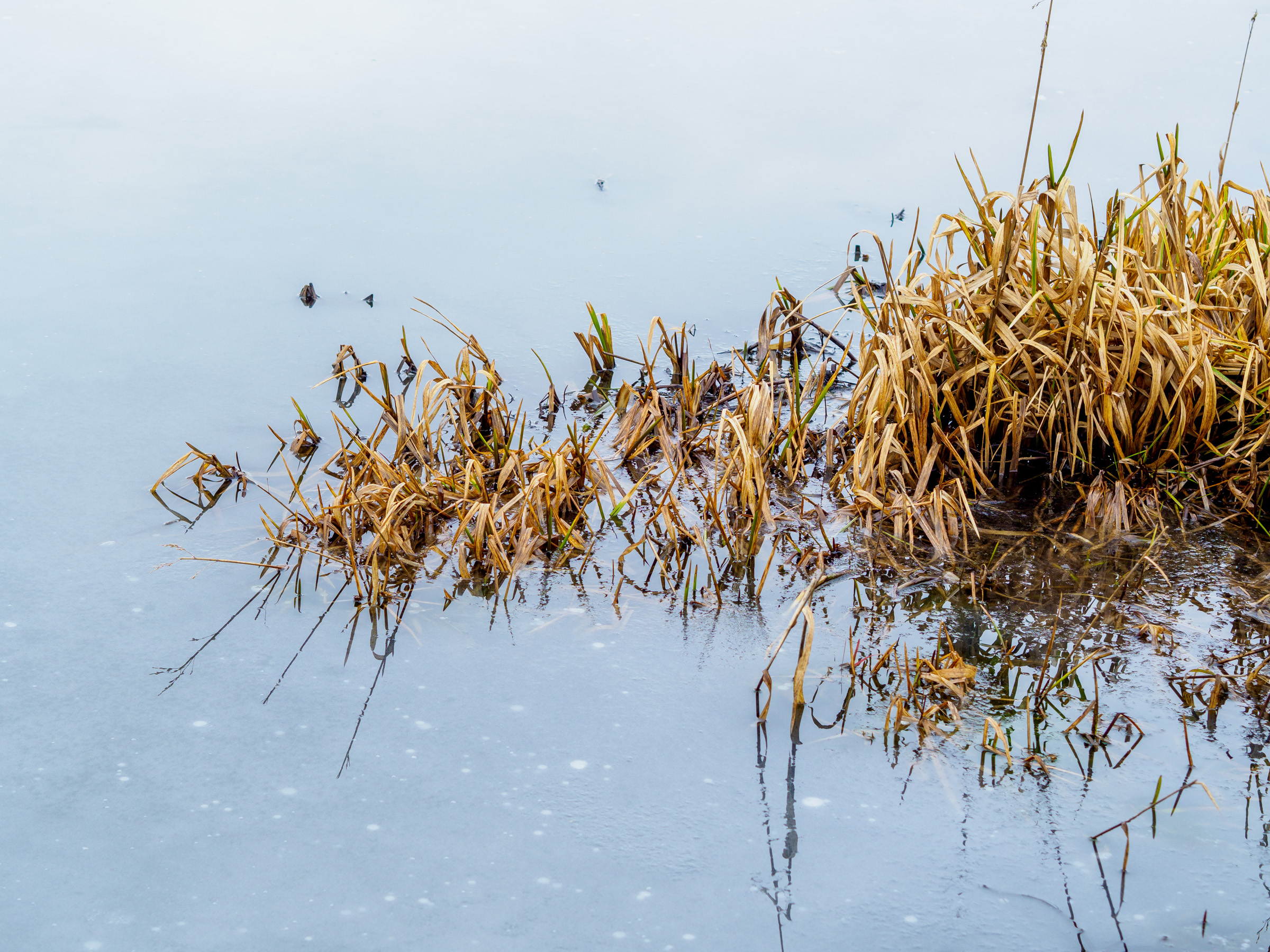
I felt this worked better, though it’s far from an award winning image. I had to wait a while for the horse to turn around to avoid this being just a shot of an equine backside.
1/125s, f/4, ISO 200.
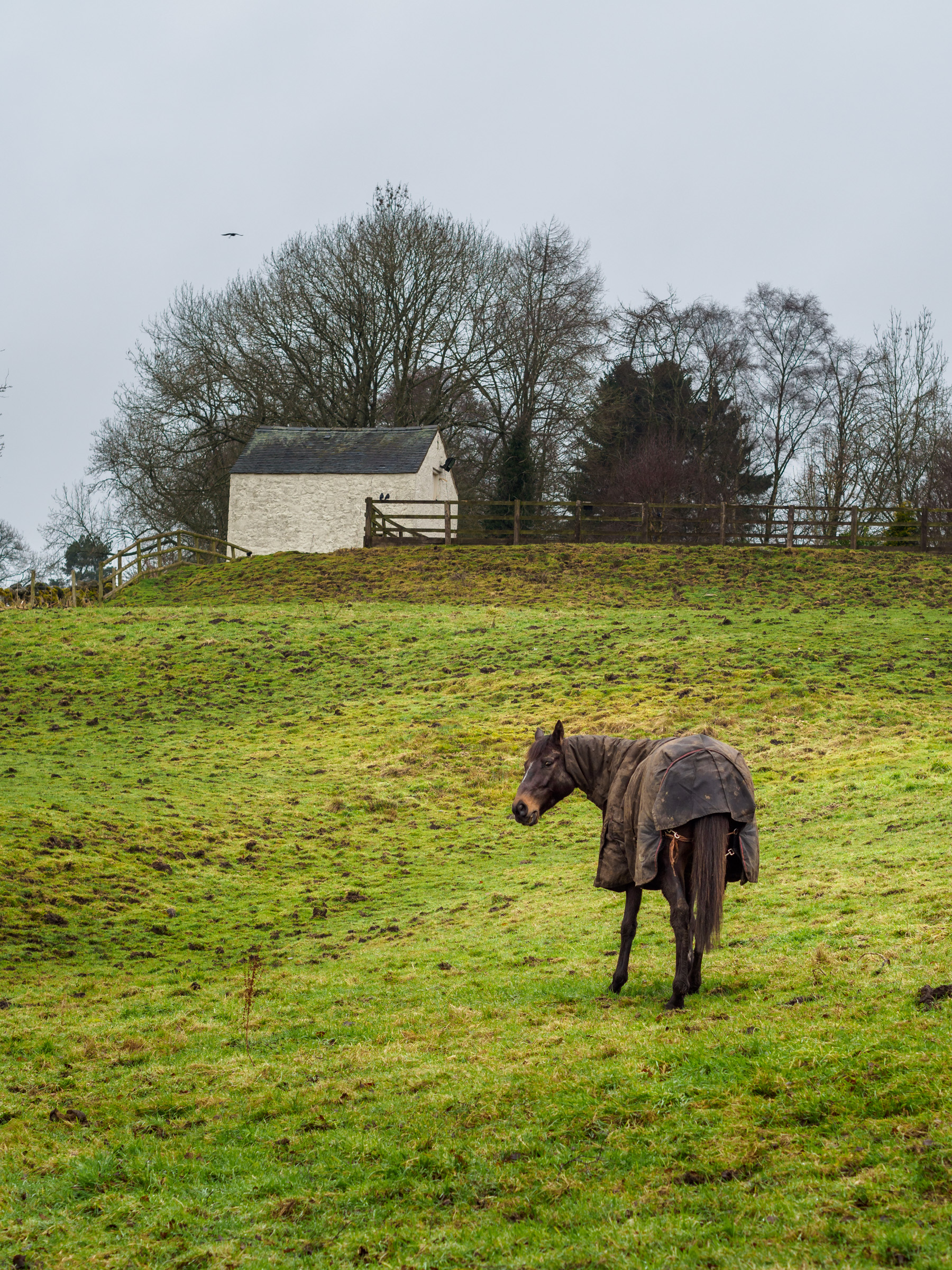
Conclusion: This is a specialised lens that I’ll hold onto for portrait photography but I won’t be using for travel and landscape. I just can’t ‘see’ at this focal length and it brings the world in too close. It’s like that annoying person at a party who insists on getting inside your personal space but you can’t get away from them because there’s a wall behind you.
Day 5: The macro lens
On Day 5, I used the Olympus M.60mm f/2.8 lens (this is equivalent to 120mm on a full frame camera). I like close-up photography, and from Day 1 of this project, I knew this was a lens that I would enjoy taking out with me.
Sadly, this being winter, it was a struggle to find suitable subjects: everything looks dead right now. I photographed chains and ropes on canal boats and some rusty metal textures but these weren’t the kind of detail shots I was hoping for.
I came across a clump of mushrooms. I found one on its own and used the Olympus in-camera focus stacking to get sufficient depth of field. This is 8 shots, focus stacked in camera. The in-camera focus stacking isn't perfect here: I can see a halo around the top of the mushroom. But it's not bad considering it was handheld.
1/100s, f/2.8 ISO 800.

Since Cara had been with me on this project, I thought I needed to include a photograph of her. Interestingly, I could have taken a portrait of her with the lens I used yesterday, but it didn’t occur to me. And that’s the thing about different lenses. Some lenses get you thinking in a particular way — “What if…?” — and this macro lens is one of them. I really want to crop this image from the bottom right corner so that she’s centred in the frame, but I’m not allowing myself to do that on this project.
1/250s, f/3.5, ISO 800.
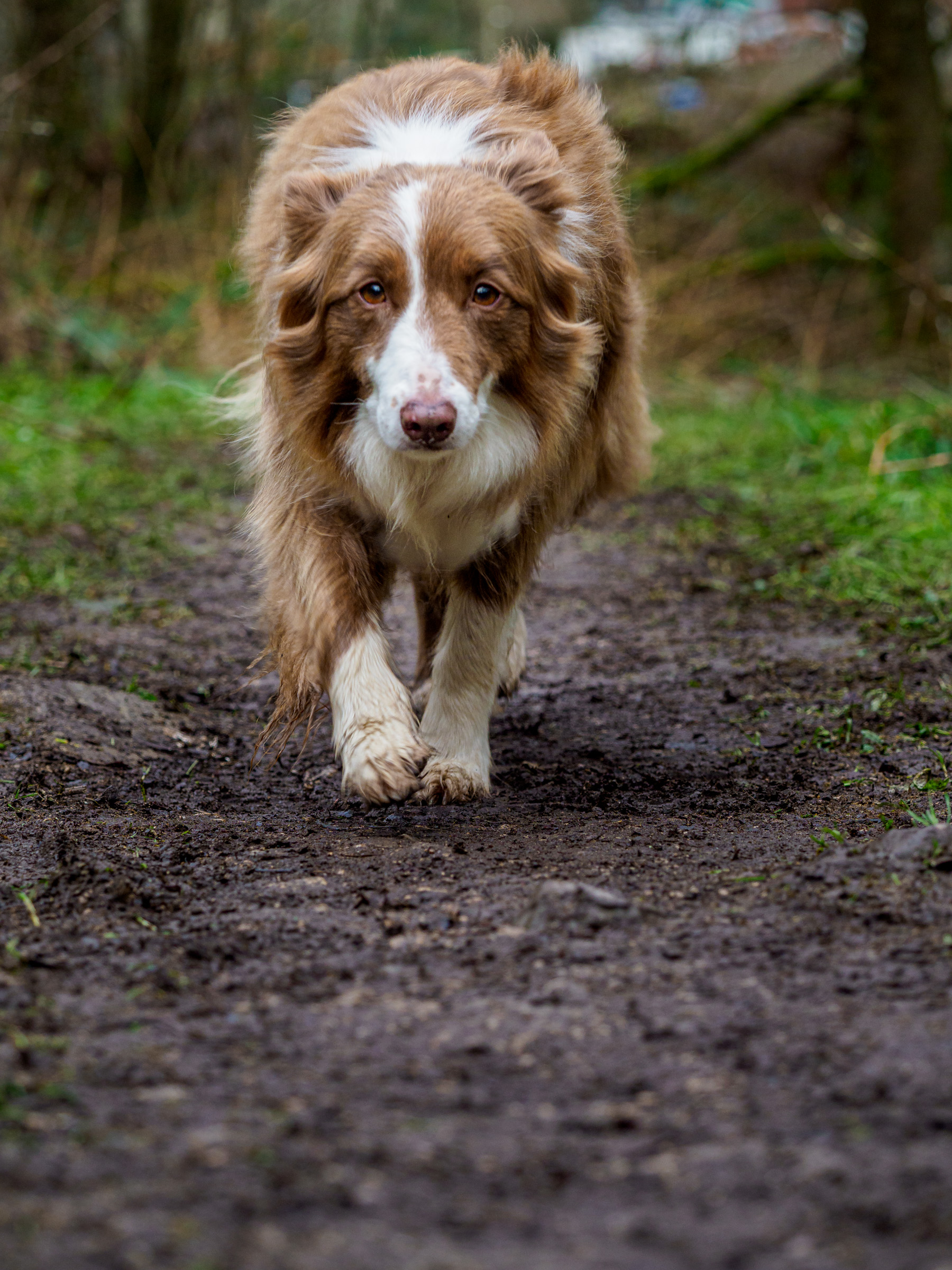
Conclusion: This is another specialised lens but it’s one of my favourites of the set. I find it easier to ‘see’ at this focal length, especially since it’s a macro lens that lets me get in close. It encourages me to look for more ‘intimate’ landscape pictures — details in the landscape, rather than the epic vista. Unlike the 12mm lens that shouts, this lens whispers.
Reflections on this project
This is a circular walk that I’ve been doing for years. Most of the time, I walk the dog on auto-pilot and hardly pay any attention to the world. I enjoyed the last 5 days because I paid attention to what I was seeing. And that’s one of the reasons I do photography: to make myself see better. In terms of my expectations, I knew I’d enjoy the 60mm lens but I was surprised that I enjoyed using the 17mm lens so much. Before this, I would have said that a 12mm focal length (or even a super wide focal length, like 8mm) was where I liked to sit. It will be interesting to see if these findings extrapolate to more epic landscapes. Stay tuned to find out!


